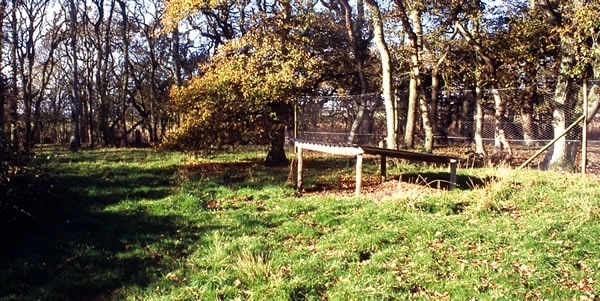
When buying a day’s shooting, how many guns consider the contribution that the shoot makes to biodiversity and conservation? Roger Draycott believes they should.
The GWCT encourages everyone who runs a shoot to maximise the conservation gains that can arise from
responsible game management, but could guns be doing more to help ensure shoots deliver these benefits? When buying a day’s shooting, the gun or team of guns will often choose the day based on two key factors: 1) price and 2) reputation of the shoot for providing sporting birds and good hospitality.
We would like all guns to consider a third factor – the contribution that the shoot makes to biodiversity and conservation. GWCT research has demonstrated that good game management can lead to significant benefits for wildlife. For example, woods managed for pheasants tend to support more songbirds and butterflies and they have more and wider woodland rides which benefits a wide range of wildlife.
It is active management of the woods that is key – opening up the woods to encourage the understorey shrubs – this work is much more common in pheasant shooting woods. Game cover crops to hold and drive pheasants also benefit a wide range of declining farmland birds including yellowhammers, corn buntings and linnets.
Effective predation control in the nesting season to encourage wild birds to breed successfully, will also benefit other ground nesting birds too – many of which, like skylark, lapwing and curlew, are in serious decline.

So, if game management can be so good for wildlife, why does it attract such criticism from some quarters? Many conservationists, including those with shooting interests, raise concerns about the potential ecological impacts of releasing large numbers of pheasants into the countryside.
Are the pheasant poults eating the wildflowers in the woods or causing declines in butterflies by eating the caterpillars? Is releasing large numbers of birds helping to support more foxes and buzzards by providing an abundant food source? It has even been suggested that pheasants may be causing songbird declines by eating all the food in the countryside so there is none left for the songbirds.
Are shoots complying with the Code of Good Shooting Practice?
The reality is that most shoots are well run with a high level of environmental care in place. They have to be, otherwise the shoots would not be successful, especially in the long term, if the right habitats are not
provided.
Of course, there are examples of bad practice and it is these which tend to hit the headlines. But how can guns be reassured that the shoot they are thinking of buying a day from, is delivering for wildlife
and following best practice with respect to predator control, gamebird welfare and looking after the local environment?
The first step is to ask the shoot if they have a copy of, and follow, the Code of Good Shooting Practice. If the answer is anything but a very firm ‘yes’ then look elsewhere. A new game marketing scheme is being developed by the British Game Alliance and will be launched in the summer.
This will provide further confidence for guns that shoots are operating to high standards.
GWCT Shoot Biodiversity Assessments – helping shoots deliver biodiversity
The GWCT advisory team offers a bespoke service for shoots to assess compliance with the Code of Good Shooting Practice. This involves a visit to the shoot to look at release pens, woods, cover crops and general shoot management.
This would include a look at pest and predator control policy, training/certification of staff, bird sourcing and compliance with the game farmers’ code, management of any designated land such as ancient woodland or SSSIs etc. This is then followed up by a report highlighting what is being done well, anything that needs improving, and an action plan suggesting ideas that should be achievable and worthwhile, without costing significant extra resources.
Among the many objectives here is to ensure that the shoot is complying with the Code requirement to deliver an overall biodiversity gain and to provide re-assurance to guns, both paying clients and invited guests, that the shoot is run to high standards.
Shoot Biodiversity Assessments are proving popular – book yours now.